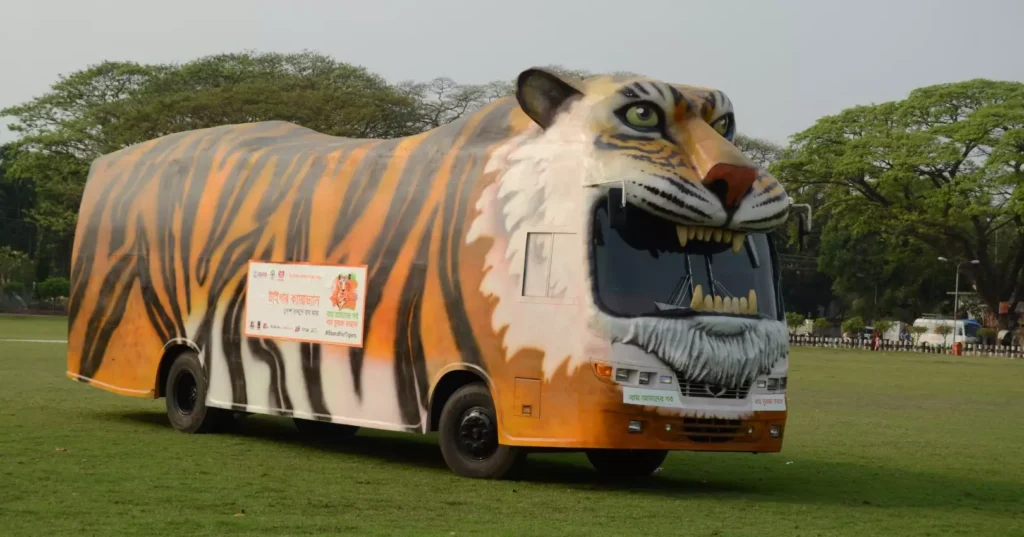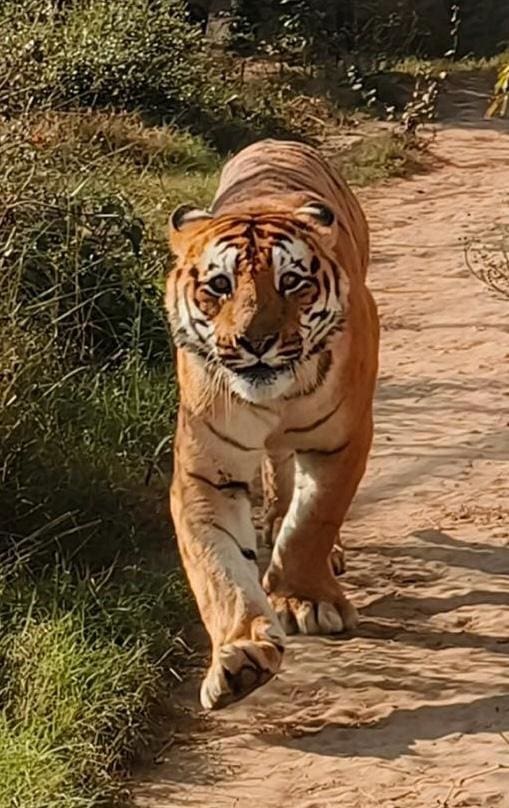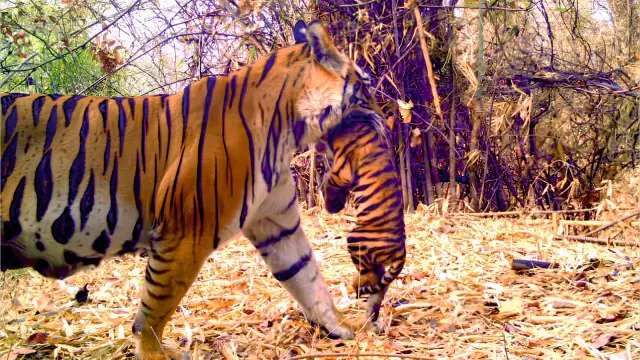Tiger Caravan
The Tiger Caravan rolled out of Dhaka in early 2016, a 40-foot bus painted like a roaring tiger, carrying not commuters but a mission. It was a traveling museum and classroom designed to bring the Sundarbans and its tigers into the heart of Bangladesh. Inside, visitors found recreated forest landscapes, art, and multimedia exhibits. At night it became a mobile film unit, screening documentaries under open skies. Alongside, TigerTheater performed over 200 street dramas linking people, culture, and nature.
Over four months, the Tiger Caravan toured 47 districts, directly engaging 250,000 people and reaching 2.5 million more online through #IStandForTiger. Families, children, and students gathered in markets and schools, making conservation an experience rather than a lecture. It was part of a broader national campaign, building on years of community-focused initiatives like “Mother-like Sundarbans.” These efforts showed that real progress comes when communities adopt tiger conservation practices. By 2016, positive conservation attitudes had risen from 30% to 74%.
The Tiger Caravan’s legacy is clear: conservation succeeds when science travels to people, not the other way around.
The Tiger Caravan article:
Based on UNB, Bangladesh.
Photo via UNB.







